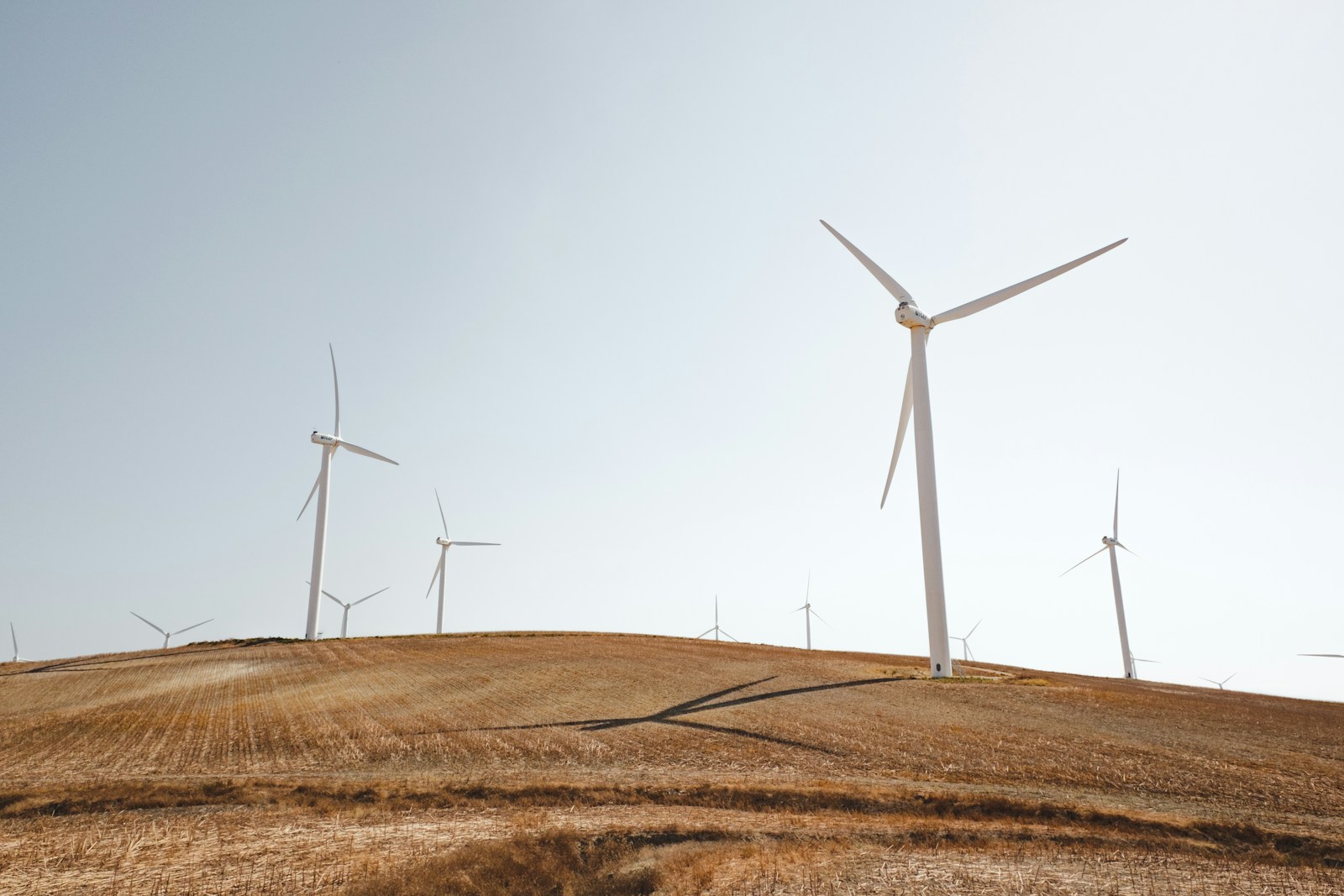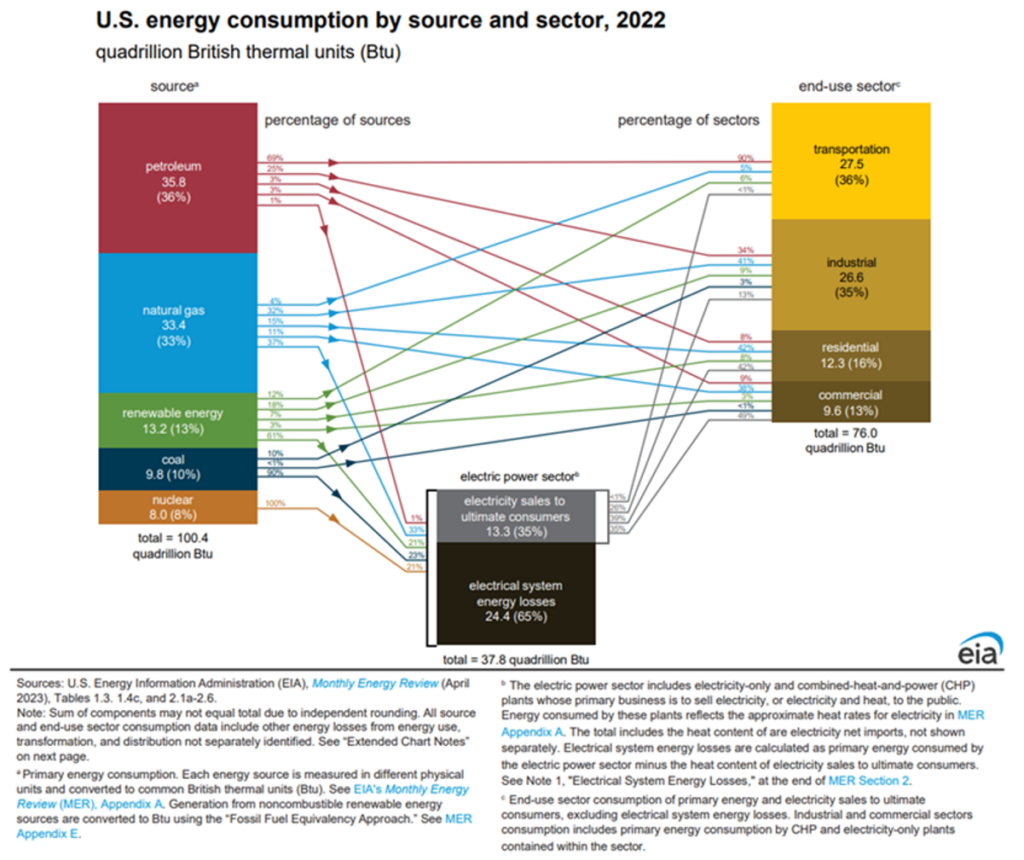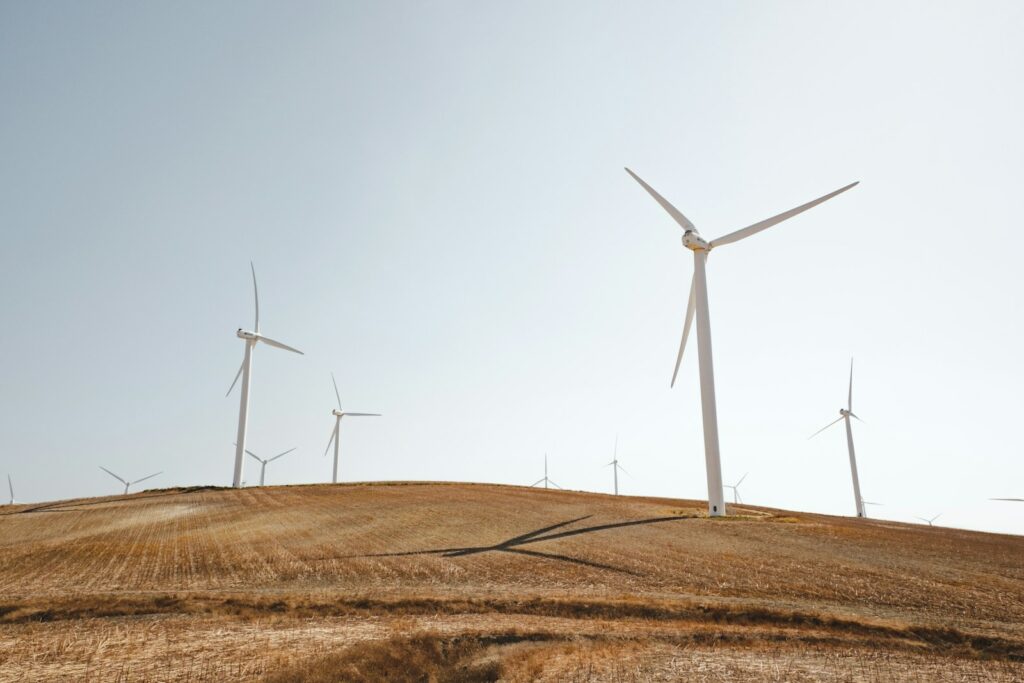How Much Renewable to Replace Fossil?
By Branko Terzic

The “grand energy transition” calls for the replacement of coal and natural gas fueled power plants with new solar and wind facilities by the year 2050. One important question: How many megawatts of renewable capacity would be needed to replace each megawatt of conventional power? As solar panels do not generate power at night additional solar panels would need to be installed to fill batteries during the day for power supply at night. Wind, also being intermittent during any day, would also need additional towers to fill batteries to provide power during periods of low or no wind.
One approach to answering the question of required installed capacity is to look at a recent Energy Information Administration (EIA) report of 2022. That IEA data shows that in 2022 the total installed energy capacity of solar and wind of 212,000 Megawatts produced 784,600,000 Megawatt-hours of energy.
How much energy would 212,000 MW of conventional natural gas or coal fueled generation have produced in a year?
The answer, assuming an availability factor of 85%, is that 212,000 MW of fossil production would generate 1,578,552,000 Megawatt-hours in a year.
So, if 1,578,552,000 MWh is divided by 784,600,000 MWh that equals a little more than a factor of 2.
This calculation implies that for every 1 MW of fossil power plant retired 2 MW of renewable needs to be built to produce the same energy.
A Note on Capacity Factors for Power Plants
A well run ‘baseload’ plant might have a capacity factor of 90–95%, an ‘intermediate’ plant (which is cycled daily to meet load swings) might have a capacity factor of 40–75% and a “peaking” plant (which is only brought on the meet high demand moments) might have a capacity factor of 5–20%.
So, to calculate annual output (Energy) take the Capacity (MW) and multiply by 8,760 and multiply again by your assumed Capacity Factor.
For comparison’s sake typical capacity factors for wind are 30-50% and solar photovoltaics (PV) 15-20% in regions with good resources, otherwise wind is more like 25% available.
The reason I did not use the 2022 production data for coal and natural gas power plants is that production from those plants was curtailed anytime wind and solar produced electricity at lower prices which included periods when the price was negative! Thus, the annual production from coal and natural gas in 2022 was not a measure of what those power plants could have produced in 2022.
Conclusion
So, something more than 1 MW and less than 2 MW of new renewable capacity would need to be constructed for every 1 MW of coal or gas retired depending on the assumed capacity factor i.e. whether the retiring plant was producing at base load, intermediate or peak. All new renewable wind and solar would need to be accompanied with the construction of significant storage capacity to replace the retiring coal and natural gas power plants. This last statement excludes the possibility of massive transcontinental electric transmission line construction supplanting the need for new local battery storage installations. The number is closer to 2 than 1, just saying.

END
The Honorable Branko Terzic is a former Commissioner on the U.S. Federal Energy Regulatory Commission and State of Wisconsin Public Service Commission, in addition he served as Chairman of the United Nations Economic Commission for Europe ( UNECE) Ad Hoc Group of Experts on Cleaner Electricity. He holds a BS Engineering and honorary Doctor of Sciences in Engineering (h.c.) both from the University of Wisconsin- Milwaukee.
#BrankoTerzic #energy #regulations #experience #research #future #opportunity #strategy #management #people #electricity #power #utilities #renewables #RenewableEnergy #energysector #powergeneration #energyindustry #powergrid #power #electrical #electricalgrid #solarenergy #windenergy #renewableenergy #windturbine #windpower #wind #cleanenergy #energy #windturbines #engineering #powerlines #powerdistribution #substation #powerplant #powersystems #electricalengineering #cleanenergy #powersector #gogreen #climatechange

